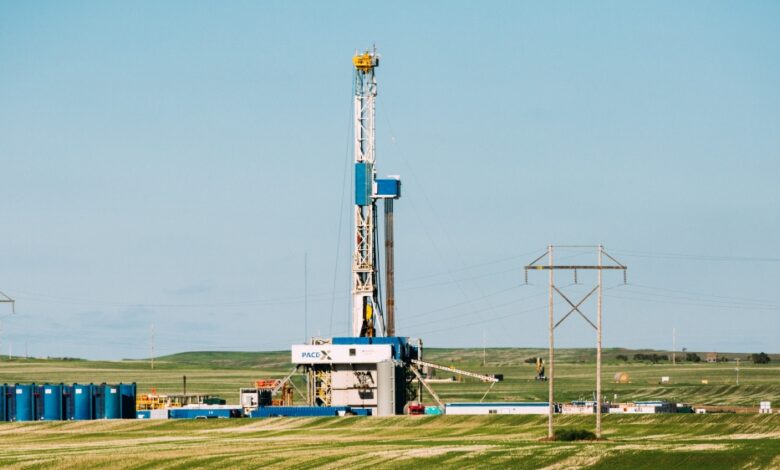Nabors, Hess convert Bakken rigs to highline power

Nabors has successfully converted all four of its Hess Corp drilling rigs working in the Bakken to highline power. The company installed its Canrig PowerTAP Highline Power Transformer Module to enable direct power from the utility grid. Backup onsite generators ensure power goes uninterrupted should an outage occur.
Over the next five years, Hess expects this fully electric Bakken drilling fleet will reduce greenhouse gas emissions from its Bakken drilling operations by approximately 50% and energy costs by approximately 70%. Powering drilling operations with electricity also reduces noise and truck traffic.
Hess said during the project’s pilot in 2022, the use of electricity as the primary energy source increased rig reliability by providing a secondary power source. Looking ahead, Hess expects electrification of its rigs and access to highline power also to reduce downtime.
Nabors rigs have long been running on grid power. More recently, Canrig Drilling Technology, a division of Nabors, released its transformer technology. PowerTAP enables highline power utilization on any AC drilling rig where grid power is accessible, regardless of rig manufacturer. It is skid-mounted for easy transport to and from rigsites and easily installed anywhere compatible utility electrical power is available using a standalone conductor cable reel.
Field results from more than 20 PowerTAP modules deployed in the Lower 48 on Nabors and non-Nabors rigs indicate an initial average savings per rig of 20 metric tons of CO2e daily.1 Canrig also plans to introduce technologies to power additional wellsite equipment directly from the PowerTAP module and enable phase conversion capabilities where required.
“We are committed to delivering responsible hydrocarbon production through smart, sustainable solutions. PowerTAP is one of many impactful technologies we’ve purpose-built to simultaneously lower costs and emissions for our customers. We are proud to collaborate with Hess to achieve their sustainability goals and drive better drilling performance,” said Canrig Senior Vice President Don Prejean.




